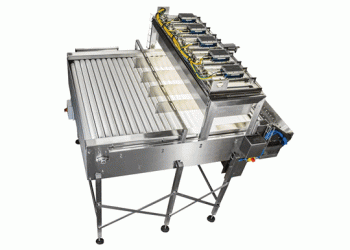#Frenchfries#potatoproduction#soilmanagement#watermanagement#foodprocessing#agriculture#farming#agronomy#agricultural#engineering#farmmanagement
French fries are one of the most beloved and popular foods in the world, and producing the perfect fry requires a combination of art and science. This article will explore the latest research and techniques for producing the perfect French fry, providing valuable insights for farmers, agronomists, agricultural engineers, farm owners, and scientists who work in agriculture.
French fries are a staple food in many parts of the world, and their popularity continues to grow. According to a report by Grand View Research, the global French fries market size was valued at USD 21.3 billion in 2020 and is expected to grow at a compound annual growth rate (CAGR) of 4.7% from 2021 to 2028. As demand for French fries continues to rise, farmers and agronomists are increasingly focused on producing high-quality potatoes that are suitable for processing into French fries.
To produce the perfect French fry, farmers must pay close attention to several factors, including the variety of potato, soil conditions, irrigation, and fertilization. The ideal potato for French fries is one that is high in solids and low in sugars, which can lead to a darker fry color and an unpleasant taste. Some of the most popular potato varieties for French fries include Russet Burbank, Ranger Russet, and Umatilla Russet.
In addition to selecting the right potato variety, farmers must also pay attention to soil conditions, irrigation, and fertilization. According to a study published in the Journal of Agricultural and Food Chemistry, soil pH and moisture content can have a significant impact on potato quality, including fry color and texture. Additionally, fertilization can affect both the yield and quality of potatoes. Farmers should work closely with agronomists and agricultural engineers to ensure that their soil and water management practices are optimized for potato production.
Once the potatoes are harvested, they must be carefully processed to produce the perfect French fry. According to a study published in the Journal of Food Science and Technology, the ideal French fry should have a golden-brown color, a crispy texture, and a soft, fluffy interior. Achieving this requires careful attention to the frying process, including the temperature of the oil, the length of time the potatoes are fried, and the type of oil used.
In conclusion, producing the perfect French fry requires a combination of art and science. Farmers, agronomists, agricultural engineers, farm owners, and scientists who work in agriculture can all play a role in producing high-quality potatoes that are suitable for processing into French fries. By paying close attention to soil conditions, irrigation, fertilization, and the frying process, it is possible to produce French fries that are both delicious and nutritious.








